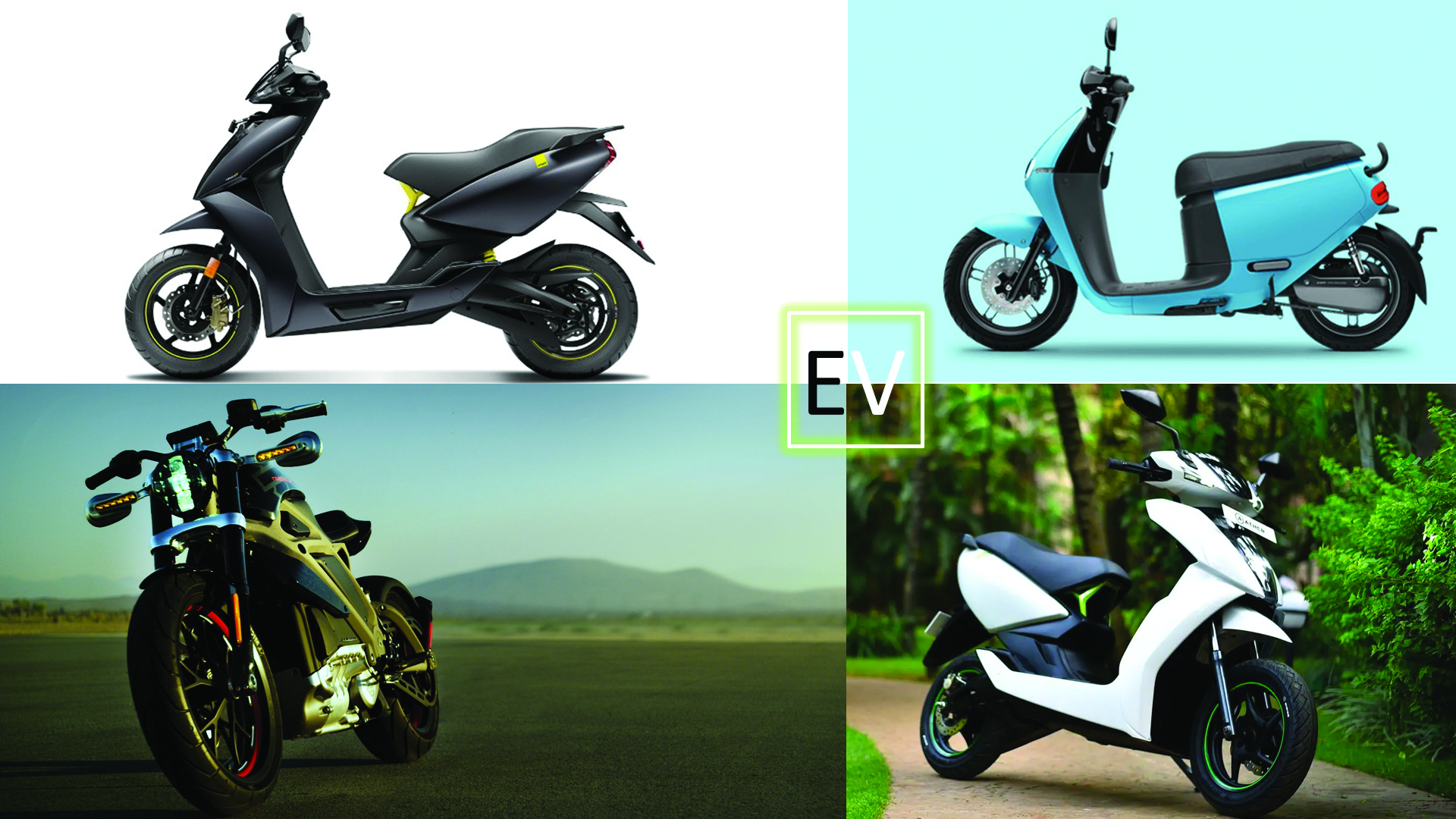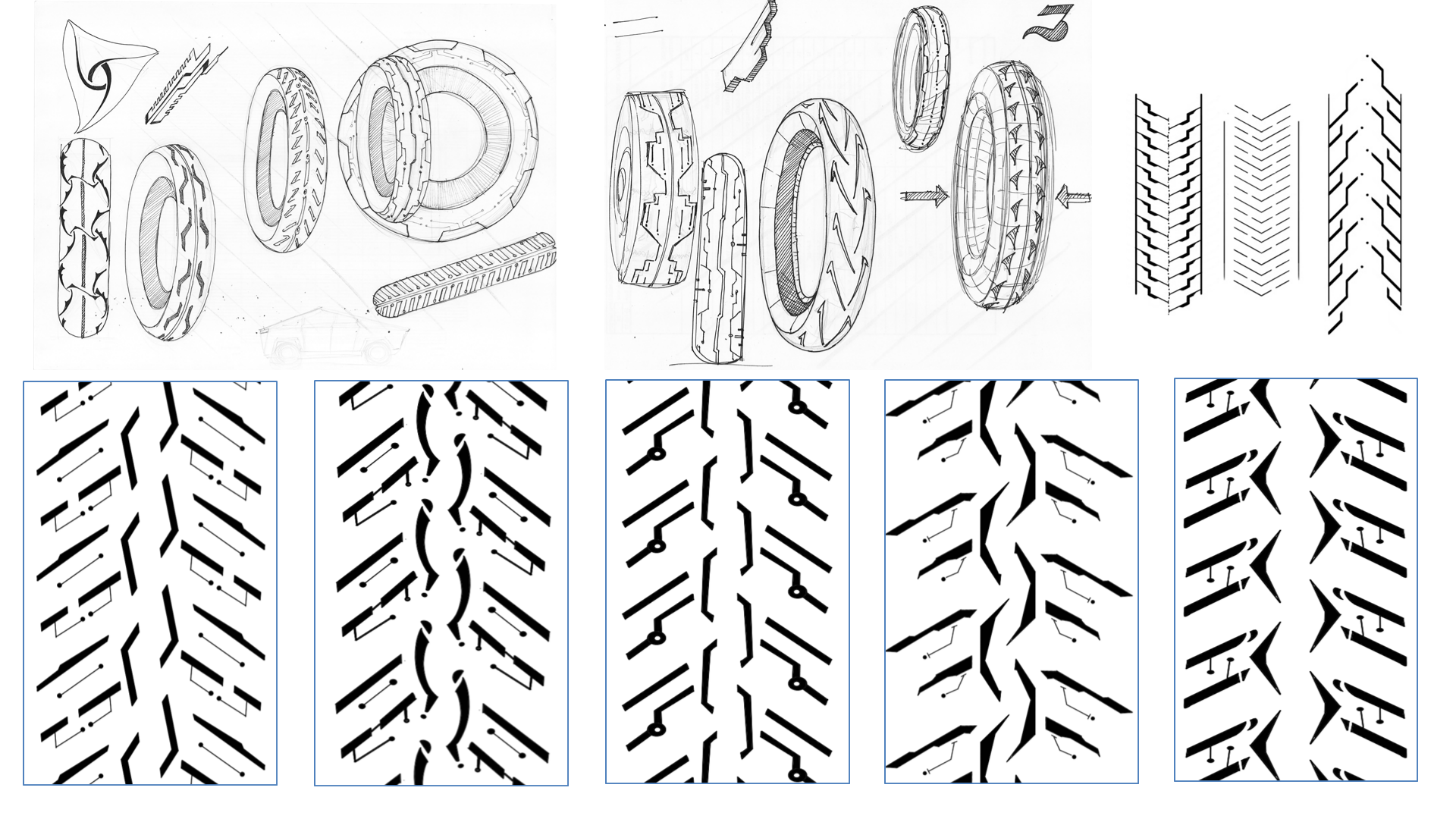The R&D experts at CEAT reveal the extensive processes they go through when designing the look of a new tire.
Designing tires for various automobile applications centers around three major aspects: geometry design for meeting specific target performance; aesthetic design for visual appeal; and design for manufacturing and assembly. This article explores a design tool referred to as Semantics, and its application for improving tire aesthetics. Semantics is a scientific approach to designing a product that communicates information on customer requirements, and that aims to improve the customer’s overall experience of using the product. CEAT has adapted Semantics for use as a tool for tire design for passenger car, two/three-wheeler and commercial tire applications.
CEAT’s research and development focus places great importance on product innovation, as it is a key element in creating products to meet current and future consumer needs. For the most part, product innovation is associated with the application of science and technology, while product styling and aesthetics is often an underestimated factor in the innovation chain. However, innovation and design often share the same goals, and form synonymous, complementary and synchronous activities – the two areas being overlapping activities or fields intersecting on the Venn diagram.
The primary challenge for tire design is successfully integrating technology demands and market research
to produce consumer-centric and aesthetically appealing products. Initially, the basic science is investigated, then engineers refine this to develop new products or services.
In addition, good product design is tasked with introducing scientific and technological innovation
to the practices of daily life.
CEAT’s research and development teams use many innovation tools – including design thinking, ethnographic research, Semantics, Theory of Inventive Problem Solving (TRIZ), value engineering and Design of Experiments (DOE), as well as digitalization tools for scientific and data-based research.
For the development of unique, appealing tire designs with high aesthetic values, CEAT’s experts use Semantics as a tool at the concept design stage, creating better, futuristic and more meaningful tire designs according to consumer preference and perception of products, which strongly influence a product’s success. Semantics, as a tire styling tool, has helped CEAT to improve its product portfolio.

Semantics for product design
According to CEAT’s experience, consumers place a great emphasis on cognitive response (the judgments they make regarding product selection based on perceived information). These judgments fall into three categories.
The first is aesthetic impression. This is the sensation that results from a perception of attractiveness when viewing a product. For example, directional tread patterns are often preferred for high-speed vehicles because of their fluidic appearance.
Second is semantic interpretation. This is when a product ‘says’ what its function is, and communicates its mode of use and qualities. For example, tread blocks with higher traction edges are preferable for use on mountaineering vehicles as they ‘communicate’ the design’s suitability for use on off-road terrain.
Finally, symbolic association is the perception of what a product says about its owner or user. An example of this is the use of personal branding on the tire sidewall, which suggests exclusivity for fleet owners.
All products or objects are designed to have purpose or meaning for the user. This is the first step in concept design. To understand consumer perceptions of new designs, the CEAT team uses ethnographic research. This focuses on the study of human communication with respect to behavioral patterns, the emotionally and socially consequential expression of shared beliefs, values, attitudes, longings and intentions or culture of a particular group of people.
To conduct this research, CEAT utilizes user surveys, previous market studies and on-site ethnographic research. In some cases, this can involve interviewing consumers about their lifestyle and product perception. This helps create mind maps and mood boards, on the basis of which designers can create Semantics elements – which include signifiers, metaphors and artifacts – through brainstorming and ideation, which connect with consumer perception of tire design.
When applying Semantics, there are a few principles that help the CEAT designers to create the physical characteristics that will be the focus of their early tire design concepts. These are defined as semantic inspirations and include Gestalt theory, color, shape and form and materials.
Gestalt theory is the arrangement of parts or elements that appear and work as a unit – an organized whole that is perceived as more than the sum of its parts. The use of Gestalt theory is primarily applied to sidewall engravings.
To achieve desired goals in product design, designers assign different meanings and associations to colors – for example, white for quietness, yellow for happiness. This meaning/association will vary according to culture and society. Color can also elicit feelings and change mood. Since tires are predominantly black, designers have far less freedom to change colors. CEAT has, however, undertaken projects for special edition color sidewall tires.
Shape is the one of the first elements consumers perceive. It usually describes the functionality of the product, expresses its characteristics and attracts emotional attention from the consumer. This technique
is largely used in tread pattern geometry concept creation, where metaphors are converted into tread pattern designs.
The materials used in a product are selected by criteria that can include strength, weight and cost. In addition, some are selected on an aesthetic basis, as different materials possess different characteristics, such as texture, color, tactile feel and reflectivity. Once again, here the options for tire designers to use alternative materials to improve aesthetic appeal are limited.

Semantics and tire design
CEAT has developed a unique approach for embedding semantic ideations into tire designs.
After ethnographic research, the tire design is mind mapped via a collection of keywords and metaphors
that resemble the product’s characteristics and act as a form of communication between the tire design and the consumer.
Words and adjectives that relate to the product, consumer and context (the location or terrain where the tire is going to be used) are considered. This widens the design perspective in terms of the consumer’s viewpoint, likes and dislikes. In some case applications, the cultural and regional perspective of the consumer is also an important consideration.
These keywords are used to generate mood boards and visual theme boards. From here, the team creates lifestyle boards, using images to convey the connection with the customer’s personal and social values.
The generation of mood boards is intended to create a single expression of values for the product –appealing to the customer through the lifestyle they are used to, conveying the sentiment, feeling or emotion that the product communicates when first seen by the consumer. For example, creation of a mood board is used to explore the relationship to young consumers (as the end users) during development of a tire design for electric vehicles.
Visual theme boards are made after selecting the preferred mood board, and design images are collected that convey the target appeal. This enables designers to explore styling features that provide inspiration for visual forms and thereby connect to the consumer and elaborate on the product’s values. You can see a visual theme board for electric vehicle tire development on the previous page.
The process then moves to digital sketches of new ideas, using signifiers and metaphors, which are then converted into CAD models.
Signifiers are constructed, recognizable features (or mini objects) that ‘make sense’ to consumers. They are identified from keyword mind maps, and are used for tread pattern geometry design. For example, the use of lightning has an association with high speed, and so is used in tread design for high-speed motorcycle tires.
Metaphors transfer meanings from one usually familiar domain of experience to another, usually less structured domain. For example, the use of a circuit-esque design has a familiar association with electrical applications, so is used in the tread design for electric motorcycles.
These broad visual styling objectives are then narrowed down and a design is selected. A range of generated concepts are systematically made to converge on a single selected concept in what CEAT calls the funnel process, with unused designs being rejected.
The shortlisted tire design is then further fine-tuned with respect to functionality of the product while maintaining the aesthetic aspects. Technical attributes are communicated through extrinsic features such as labeling, branding and packaging. These should be communicated in such a way that consumers can easily make their purchase decision. Design theorists have ascertained that companies that are able to communicate specific features and product values through product appearance can achieve a competitive market advantage.
Tire appearance as a tool
With the application of Semantics, designers are able to convey specific intentions about how the designed product will be perceived by consumers. Design intent should be embodied in metaphors, signifiers and artifacts that can be easily interpreted by consumers. These serve as the design’s message to consumers and help to inform the buying decision. CEAT has developed several new patterns using this approach, with some of these patterns winning a number of accolades.
This approach has helped CEAT to improve its design capability and product portfolio when developing tire designs for global markets, making it possible to create products that are distinctly different from those of industry competitors.


